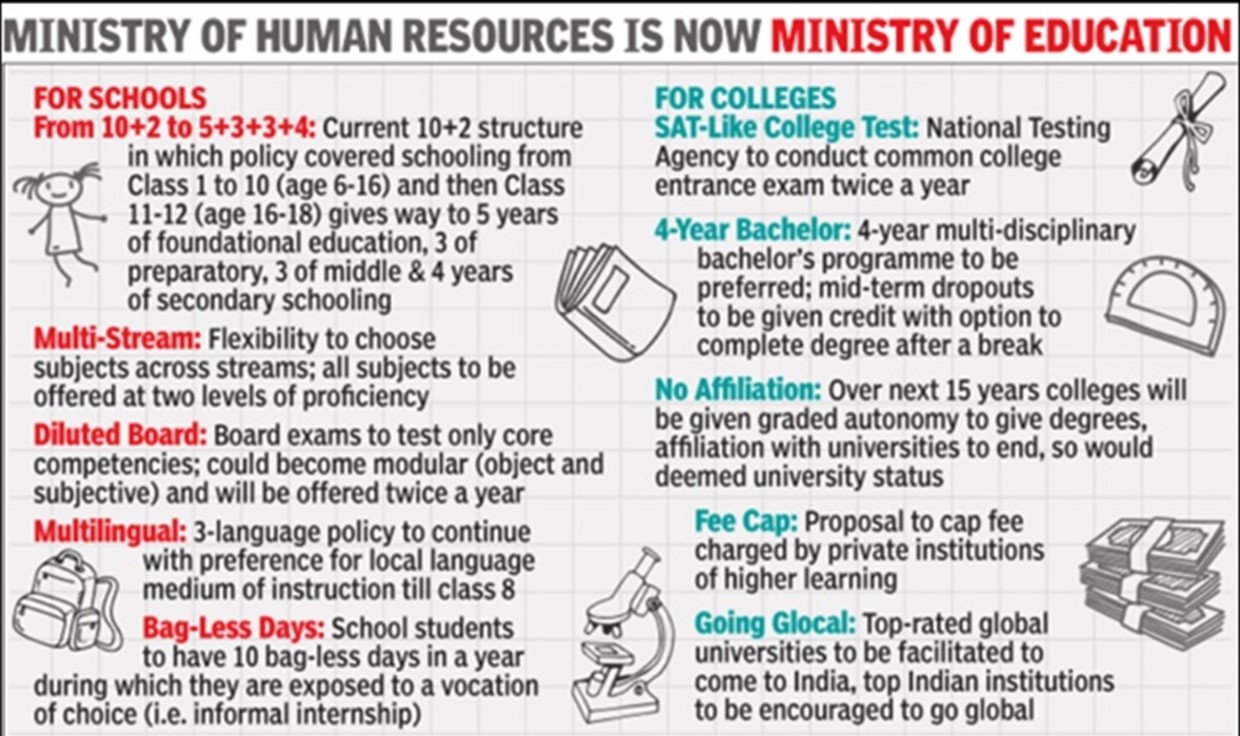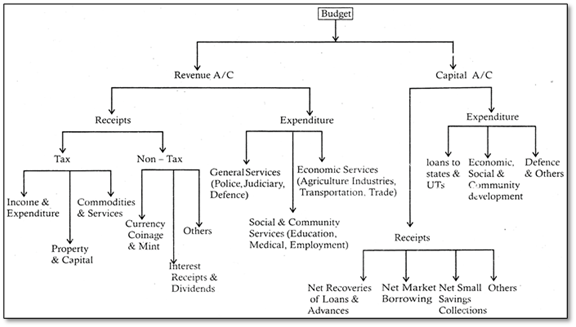Wednesday, 9th February 2022
Freedom of Religion and Attire
In News
After six students were banned from entering a college for wearing a hijab last month legal questions on reading the freedom of religion and whether the right to wear a hijab is constitutionally protected has come to light.
About the News
- Six students in Karnataka’s Udupi district were banned from entering a college for wearing a hijab by the management that cited a new uniform policy behind the reason for the ban.
- Government Order was issued on February 5, 2022, prescribing guidelines for a dress code for both government and private schools, and pre-university colleges in Karnataka in the light of the hijab controversy.
- A writ petition has been filed in the Karnataka High Court seeking a declaration that wearing a hijab is a fundamental right.
- A separate Petition has been filed against the Government Order in the High Court by aggrieved students.
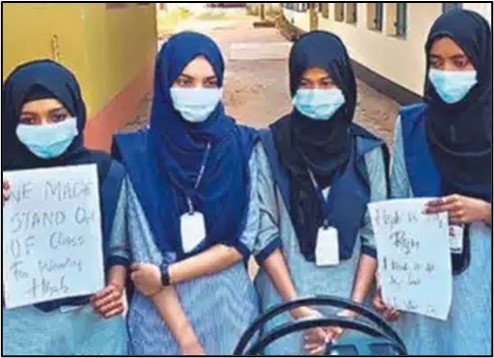
Contention of the petitioners
- The Indian constitution guarantees the Freedom of Conscience and the right to profess, practise and propagate religion.
- Wearing of hijab, or a head scarf is an ‘essential religious practice’ prescribed in the Holy Quran. Hence, the State Government has no regulatory power as wearing of hijab is protected under the right to freedom of religion in Article 25 of the Constitution.
- The right to wear a dress is a facet of the fundamental right to speech and expression under Article 19(1)(a), and threshold of ‘public order’ should be extremely high to impose any restriction under Article 19(2).
- The order violates the right to privacy guaranteed under Article 21 of the Constitution, as interpreted by the apex court in Justice Puttaswamy’s case.
- Sections 7 and 113 of the Karnataka Education Act, 1983, under which the GO of February 5 was issued, have no reference to a dress code, and hence the government had no competence to interfere to lay down policy.
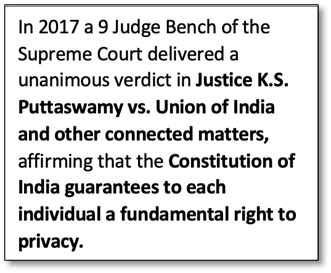
Constitutional safeguards for Freedom of Religion
Articles 25-28 of the Indian Constitution guarantee the right to freedom of religion to all citizens who all are residing within the territory of India.
- Freedom of conscience and free profession of religion. (Article 25)
- Article 25(1): Subject to public order, morality and health and to the other provisions of this Part, all persons are equally entitled to freedom of conscience and the right freely to profess, practise and propagate religion.
- Freedom to manage religious affairs (Article 26)
- Freedom from payment of taxes for promotion of any particular religion. (Article 27)
- Freedom to attend religious instructions. (Article 28)
Article 25(1) essentially provides for a right that guarantees a negative liberty — which means that the state shall ensure that there is no interference or obstacle to exercise this freedom. However, like all fundamental rights, the state can restrict the right for grounds of public order, decency, morality, health and other state interests.
Essential Religious Practices test
- The essential religious practices (ERP) doctrine governs which religious practices are protected under Arts. 25 & 26 of the Constitution.
- In 1954, the Supreme Court held in the Shirur Mutt case that the term “religion” will cover all rituals and practices “integral” to a religion. The test to determine what is integral is termed the “essential religious practices” test.
- What constitutes the essential part of a religion is primarily to be ascertained with reference to the doctrines of that religion itself, SC has observed.
Sources:
Regulation of Internet content
In News
Recently, the Government barred the transmission of Malayalam news channel citing 'security reasons'.
About the News
- Ministry of Information and Broadcasting (I&B) has recently informed a Malayalam-language news channel, through an order that its broadcast licence had been cancelled, citing a Home Ministry order that had denied security clearance to the channel.
- Following an appeal by channel owner, the Kerala High Court granted a stay, allowing the channel to continue functioning.
- The IT rules allow the I&B Ministry to issue orders to ban websites based on their content.
- If the ministry bans the channels or websites based on inputs by intelligence agencies or submission from people regarding its involvement in propagating content contrary to model codes, they can approach courts for remedies.
What powers does the I&B Ministry have to regulate content?
- Sectors: In 2021, the Information Technology (Intermediary Guidelines and Digital Media Ethics Code) Rules, 2021, extended I&B Ministry’s regulatory powers over internet content especially on digital news platforms and OTT platforms such as Netflix, Amazon Prime or Hotstar.
- Previously, it had the powers to regulate content across all sectors — TV channels, newspapers and magazines, movies in theatres and on TV, and the radio.
- Cable channels: Beside power to ban for their content, the ministry has the Electronic Media Monitoring Cell, which tracks channels for any violations of the programming and advertising codes mentioned in the Cable TV Network Rules, 1994.
- Violation can lead to revocation of a channel’s up linking licence (for sending content to a satellite) or downlinking licence (for broadcasting to viewers through an intermediary).
- Online Content: There are no specific laws on content allowed or prohibited in print and electronic media, radio, films or OTT platforms. The content on any of these platforms has to follow the free speech rules of the country.
- Violation of Article 19(1): While protecting the freedom of speech, Article 19 also lists certain “reasonable restrictions” including content related to the security of the state, friendly relationship with foreign states, public order, decency and morality etc. Action can be taken if any of these restrictions is violated.
- Print media: In print, based on the recommendations of the Press Council of India, the government can suspend its advertising to a publication.
- Role of Agencies: There is no direct involvement, as the powers to regulate content rest only with the I&B Ministry. However, the ministry relies on inputs from other ministries, as well as intelligence agencies.
- Emergency powers: There is also a new mechanism the I&B Ministry adopts: It has used emergency powers it has under the new IT Rules to block certain YouTube channels and social media accounts based on inputs from intelligence
What are the major issues?
- Censorship: Mandate of Central Board of Film Certification (CBFC) is to give any film that will be played in a theatre, a rating indicating the kind of audience it is suitable for. In practice, however, the CBFC has often suggested changes or cuts to a film before giving it a certification. While it isn’t the CBFC’s mandate to censor a film, it can withhold giving a rating unless the filmmaker agrees to its suggestions.
- Politics of show cause: Government last year came up with a three-tier grievance redressal structure for viewers to raise concerns, if any. A viewer can successively approach the channel, then a self-regulatory body of the industry, and finally the I&B Ministry, which can issue a show cause notice to the channel, and then refer the issue to an inter-ministerial committee (IMC). For content on OTT platforms too, there is a similar structure. There have been several cases recently when issues have been raised for hurting religious sentiments, social harmony for profit making or vested interests.
- Overreach of Scope: On paper, although the regulation powers of I&B ministry are limited but the way ministry wields those powers gives it a much broader scope of what it wishes to allow on any platform.
Sources:
Vande Bharat trains
In News
The finance minister has recently announced in the budget speech that 400 Vande Bharat trains will be manufactured in the next three years.
About the News
- This announcement comes from the government as it aims to update, complement and eventually replace India’s century-old railway system (locomotive-hauled trains) with self-propelled trainsets.
- It is an addition to the current plan to run 75 Vande Bharats across India by 2023.
- The Vande Bharat semi-high speed trains were introduced in 2019 and currently, two Vande Bharat trainsets (originally called Train 18) are in operation, both from Delhi -to Varanasi and Katra.
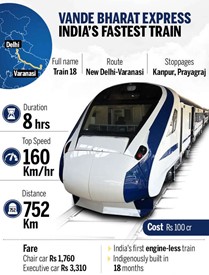
All about Vande Bharat
- Vande Bharat is an indigenously designed and manufactured semi-high speed trainset, each of 16 coaches, and self-propelled (they do not require an engine).
- The trainset works on distributed traction power system, that gives the train higher acceleration and deceleration compared to loco-hauled trains, which take a much longer time to reach top speed or to gradually come to a halt.
- With shorter journey time, a trainset will theoretically be able to cover more trips, thereby carrying more people (reduces journey time by 25% to 45%).
- The Vande Bharat coaches incorporate passenger amenities including on-board WiFi entertainment, GPS-based passenger information system, CCTVs, automatic doors in all coaches, rotating chairs and bio-vacuum type toilets like in aircraft.
- The current Vande Bharat trains have seating only in two classes -chair car and executive chair car and an upgrade from the current two Vande Bharat trainsets is already being worked on.
- The upgrades will have “better efficiency” in terms of energy and internal configuration.
- Aluminium will be used instead of steel: An aluminium body will make each trainset around 40-80 tonnes lighter than the current ones that allows lower consumption of energy as well as better speed potential.
- This will make the trains unmatched in terms of weight, reduced noise levels, environment friendly and better stability besides safety.
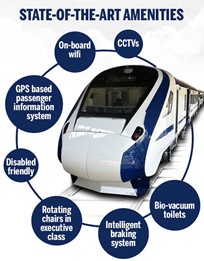
Source:
Image source:
Calcutta restored to British control
On February 9, 1757 the Treaty of Alinagar was concluded by Robert Clive and Calcutta was restored to British control. Clive had recovered Calcutta in January, 1757 from Siraj al-Dawlah and restored to British control. This city served as a prelude to the seizure of Bengal. Treaty of Alinagar restored Calcutta to the East India Company with its privileges and permitted the fortification of the town and the coining of money. The treaty was named after the short-lived title given to Calcutta by Sirāj after his capture of the city. Sirāj-ud-Dawlah was defeated and deposed by Clive later the same year. In 1947, when India gained independence, the partition of Bengal took place and Calcutta became the capital city of the state of West Bengal in India.

Source:
Digital Currency
In News
The Union Budget 2022-23 announced that there will be a tax of 30% on income from cryptocurrencies.
About the News
- Transfer of digital assets - and these includes cryptocurrencies and non-fungible tokens- will attract a 30 percent tax. Even gifting such assets will attract the 30 percent tax. The new provision to tax cryptocurrency gains will come into force from April 1, 2022.
- Additionally, all transfers of such assets will attract 1 percent tax deducted at source (TDS). There is still a grey area on how the TDS rules will be implemented. For example, in whose favor will TDS be deducted and who would be the counterparty, the platform or the other crypto participant in the transaction.
- In addition to the 30% tax rate, the taxpayer will also have to pay applicable cess and surcharge, as per their income-tax slabs. Tax will be levied on the transfer of the digital virtual asset. No deduction of expenses will be allowed, except the cost of acquisition.
- The Central Board of Direct Taxes (CBDT) will have to clarify on whether the loss arising from the transfer of one such virtual asset can be set off against the gain made from another.
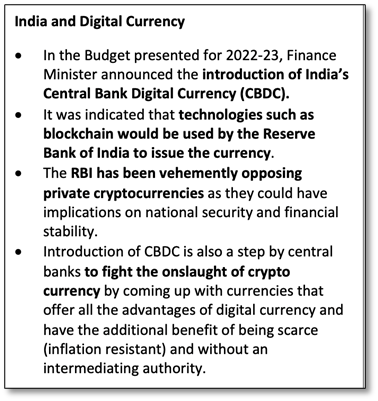
What is Digital Currency?
- Digital currency is a form of currency that is available only in digital or electronic form. It is also called digital money, electronic money, electronic currency, or cybercash.
- Digital currencies do not have physical attributes and are available only in digital form. Transactions involving digital currencies are made using computers or electronic wallets connected to the internet or designated networks.
- Digital currencies have utility like that of physical currencies. They can be used to purchase goods and pay for services. They can also find restricted use among certain online communities, such as gaming sites, gambling portals, or social networks.
- Digital currencies can be centralized or decentralized. Prominent cryptocurrencies, such as Bitcoin and Ethereum, are examples of decentralized digital currency systems. Digital currencies can transfer value.
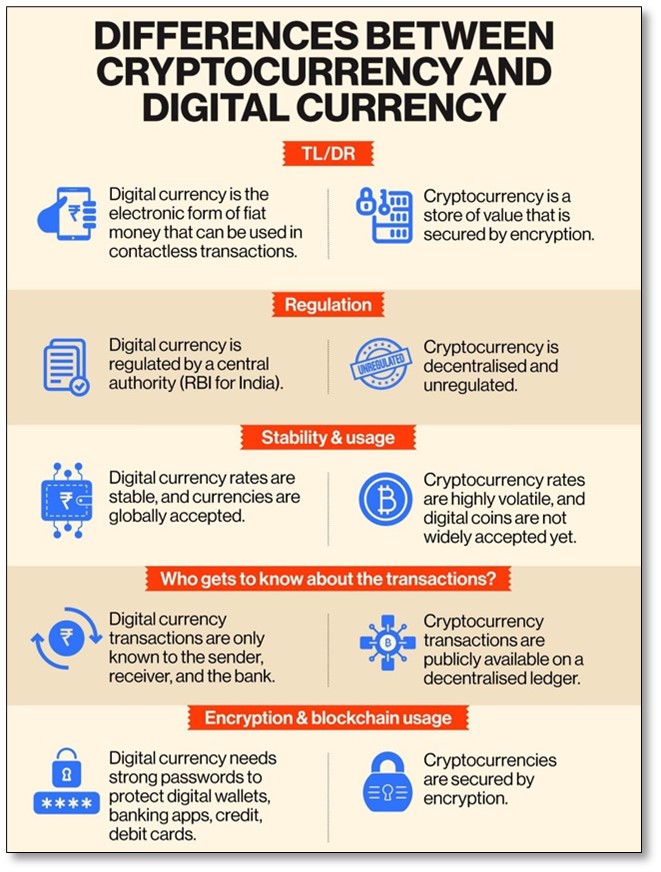
Types of Digital Currency
- Cryptocurrencies: Cryptocurrencies are digital currencies that use cryptography to secure and verify transactions in a network. Cryptography is also used to manage and control the creation of such currencies. Bitcoin and Ethereum are examples of cryptocurrencies. Depending on the jurisdiction, cryptocurrencies may or may not be regulated.
- Virtual Currencies: Virtual currencies are unregulated digital currencies controlled by developers or a founding organization consisting of various stakeholders involved in the process. Virtual currencies can also be algorithmically controlled by a defined network protocol. An example of a virtual currency is a gaming network token whose economics is defined and controlled by developers.
- Central Bank Digital Currencies: Central bank digital currencies (CBDCs) are regulated digital currencies issued by the central bank of a country. A CBDC can be a supplement or a replacement to traditional fiat currency.
Benefits of Digital Currency
- Regulation and Monitoring: With the growing adoption of digital currencies/ CBDCs, payments and transfers will be easier to identify and trace to previous sources, significantly reducing the risk of fraud and money laundering.
- Leverage in Cross-border Transaction: In the cross-border payments domain, India can take a lead by leveraging digital Rupee especially in countries such as Bhutan, Saudia Arabia and Singapore where NPCI has existing arrangements with respect to digital payments. Retail CBDCs can make cross border payments and settlements real-time.
- Fast transfer and transaction times: Because digital currencies generally exist within the same network and accomplish transfers without intermediaries, the amount of time required for transfers involving digital currencies is extremely fast.
- Low-Cost transactions: As payments in digital currencies are made directly between the transacting parties without the need for any intermediaries, the transactions are usually instantaneous and low-cost. This fares better compared to traditional payment methods that involve banks or clearinghouses.
- They do not require physical manufacturing and cannot be soiled: Many requirements for physical currencies, such as the establishment of physical manufacturing facilities, are absent for digital currencies. Such currencies are also immune to physical defects or soiling that are present in physical currency.
- They can ease implementation of monetary and fiscal policy: Under the current currency regime, the Central Bank works through a series of intermediaries—banks and financial institutions—to circulate money into an economy. CBDCs can help circumvent this mechanism and enable a government agency to enable disburse payments directly to citizens.
- They also simplify the production and distribution methods by obviating the need for physical manufacturing and transportation of currency notes from one location to another.
Issues related to Digital Currency/ CBDCs
- Problems with CBDCs: The approach of bringing a sovereign digital currency stands in stark contrast to the idea of decentralization. Central banks would indulge in issuing more digital currencies which could potentially trigger higher inflation. CBDCs would again rely on the banking system, as these are just the digital version of fiat currency.
- User Adoption: The main challenges would always be user adoption and security. If governments adopt the technology and find a way to regulate digital payment flows, we can expect more competition in the coming years.
- They do not solve all storage and infrastructure problems: While they do not require physical wallets, digital currencies have their own set of requirements for storage and processing. For example, an Internet connection is necessary as are smartphones and services related to their provisioning. Online wallets with robust security are also necessary to store digital currencies.
- They are susceptible to hacking: Their digital provenance makes digital currencies susceptible to hacking. Hackers can steal digital currencies from online wallets or change the protocol for digital currencies, making them unusable.
- They can be volatile in value: Digital currencies used for trading can have wild price swings. For example, the decentralized nature of cryptocurrencies has resulted in a profusion of thinly capitalized digital currencies whose prices are prone to sudden changes based on investor whims.
What does the future hold for Digital Currency?
- India’s stand w.r.t. cryptocurrency: To discourage investors from actively take part in crypto trading, the government has levied the highest rate of 30% tax plus surcharge and cess on the income from cryptocurrencies.
- While introducing this tax has provided some certainty of taxation, the fact that only cost of acquisition would be deductible has still left multiple challenges for the taxpayer. Further, the term cost of acquisition has also not been defined, adding to the confusion.
- The primary purpose of introducing TDS rate of 1% on the purchase of any cryptocurrency, seems to be to collate all the data in respect of the trading of cryptocurrency. This is going to be a hard step to implement on the crypto exchanges as the identity of buyer and seller is not readily available to each other.
- The effectiveness of CBDCs will depend on aspects such as privacy design and programmability.
- New measures by government indicate that Virtual assets like cryptos will not be banned in India but treated as another asset class. The government and the central bank must access and analyze every possible scenario to build robust control and framework around the evolving blockchain technology.
- Consequential amendments would also be needed in the legal framework i.e. in the Currency Act, the Foreign Exchange Management Act (FEMA) and the Information Technology Act.
- Cryptocurrencies and CBDCs can coexist. Cryptocurrencies will continue to serve different business use cases from art, finance, advertisement to supply chain. CBDCs may pose big risks to Stablecoins, not the whole cryptocurrency market.
Conclusion: Use of digital currencies requires a mental shift in the existing framework for currencies, where they are associated with sale and purchase transactions for goods and services. Digital currencies, however, extend the concept. There is a huge opportunity for India to take a lead globally via a large-scale rollout and adoption of digital currencies and hopefully this announcement brings a lot more room for debate into how we can move forward.
Question: Digital Currencies revolutionize the banking ecosystem. Elaborate.
Source:
- Tax on cryptocurrencies: Book gains and escape crypto tax before March 31, say experts:
- RBI's digital currency plan: Challenges, risks and benefits:
- Explained: The difference between cryptocurrency and digital currency:
- Central Bank Digital Currency: opportunities, challenges and design:
- Digital Currency:
Lata Mangeshkar
This is image of Lata Mangeshkar, who gave her voice to Indian movies for more than 70 years, was honoured at a state funeral recently, after she passed away at the age of 92. Daughter of Pandit Deenanath Mangeshkar and Shevanti Mangeshkar, Lata belonged to a musical family. Her father was a well-known Marathi musician and theatre artiste. She was first tutored by her father and later appeared as a child artiste in several of his plays. In her career that spanned for several decades, she lent her voice for over 30,000 songs. She sung popular tracks in Hindi, Bengali, Marathi, and other regional languages. For her contribution to cinema and the field of arts, Lata was awarded the Padma Bhushan in 1969, the Padma Vibhushan in 1999 and the Bharat Ratna in 2001. She was also conferred the Dadasaheb Phalke Award in 1989 by the government of India and France's highest civilian award, the Legion of Honour, in 2007.
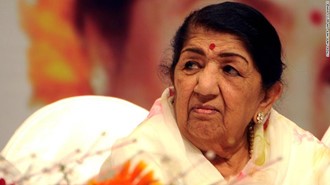
Sources:
Port Connectivity Roads
- Context: A parliamentary standing committee has expressed concerns over delay in the construction of “port connectivity roads”
- The committee noted that even though the initially targeted date of completion of Bharatmala Pariyojana Phase-I was 2021-22, only 168km of the port connectivity roads have been awarded while the rest of the 2,105km are in various stages of detailed project report (DPR) preparation.
- The Port Connectivity roads is an initiative under the Bharatmala Pariyojana, an umbrella highway development scheme. Port Connectivity Road aims to connect the areas that are dotted along the shorelines and important ports.
- Lack of robust road connectivity to ports is one of the major bottlenecks faced by the shipping sector in India.
- Bharatmala Pariyojana is a mega integrated project that includes construction of about 26,000 km length of economic corridors, the Golden Quadrilateral (GQ) and North-South and East-West (NS-EW) aimed to ease freight traffic in the country.
- Bharatmala Pariyojana is an umbrella program for the highways sector that focuses on optimizing efficiency of freight and passenger movement across the country by bridging critical infrastructure gaps through effective interventions like development of Economic Corridors, Inter Corridors and Feeder Routes, National Corridor Efficiency Improvement, Border and International connectivity roads, Coastal and Port connectivity roads and Green-field expressways.

Sources:
100th year of Chauri Chaura
- Context: 4th February 2022 marked the 100th anniversary of the event of Chauri Chaura.
- On 4 February 1922, at the peak of Mahatma Gandhi’s Non-Cooperation Movement against the colonial administration, an incident in United Provinces’ (now Uttar Pradesh) Chauri Chaura village, in the Gorakhpur district, changed the course of the Indian Independence Movement.
- The Non-Cooperation Movement was launched in 1920 in response to two key events in 1919 — the Rowlatt Act and the Jallianwala Bagh massacre.
- After a group of protesters were thrashed by the police for mocking foreign cloth, meat and liquor, a mob gathered outside the police station in protest. The policeman fired at the mob, killing three people, and in retaliation, the mob set the station on fire, killing 23 policemen.
- In response, Gandhji called off the Non-Cooperation movement, which was gaining a lot of momentum, and vociferously condemned the violence in Chauri Chaura to reinforce the principle of non-violence.
- Leaders like Jawaharlal Nehru, Sardar Patel and Rajendra Prasad reluctantly accepted Gandhi’s call. Lala Lajpat Rai famously said on Gandhi’s decision: “Our defeat is in proportion to the greatness of our leader.”
- More than 200 protesters were put on trial by the British administration for the Chauri Chaura incident, and six of them died in police custody.
- The Prime Minister also released a postal stamp dedicated to the Chauri Chaura centenary event.
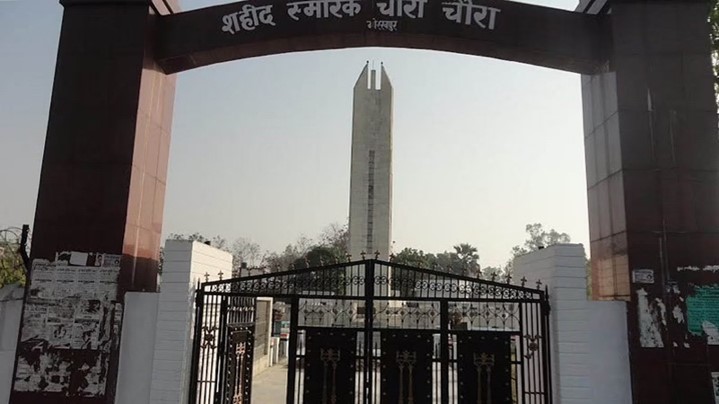
Source:
Community Forests
- Context: Neighbours of a golden langur habitat in western Assam have opposed a move by the State government to upgrade it to a wildlife sanctuary.
- The Assam Forest Department had issued a preliminary notification for converting the 85 sq. km. patch of forest into the Kajoijana Bamuni Hill Wildlife Sanctuary.
- As primary stakeholders, the villagers demanded that the “conventional idea of wildlife sanctuary” be dropped and the reserve forest converted into a community forest resource “using Forest Rights Act, 2006, to ensure community co-managed system of participation for sustainable conservation”.
- The villagers pointed out that the conservation efforts of the locals had helped the authorities concerned to restore the forest canopy from less than 5% to more than 70%, and the golden langur population from less than 100 to more than 600 over almost three decades.
- Villagers consider some of the areas inside the forest as sacred and its sanctity should be maintained.
- Kakoijana Reserve Forest is one of the better-known homes of the golden langur.
- Golden Langur (Trachypithecus geei) is found only in Assam and Bhutan and is a Schedule-I species under the Wildlife Protection Act of 1972. It is listed as among the world’s 25 most endangered primates.

Source:
PARAKH portal
- Context: The Economic Survey 2021-22 has discussed the PARAKH initiative of the government.
- Recognizing that testing and certification are crucial for enhancing the competitiveness of Indian goods and services, a portal called “PARAKH” has been set up in June 2021, wherein all the accredited, certified and recognised laboratories in the country would be mapped on a Geographic Information System (GIS).
- This united laboratory network has been developed with the support of Ministry of Electronics and Information Technology (MEITY), Bhaskaracharya National Institute of Space Applications and Geo Informatics, Gujarat (BISAG) and the concerned line ministries/ departments of the Government of India.
- .Over 6,580 laboratories have already been mapped on the portal including NABL accredited laboratories. These also include 477 BIS empaneled and recognized laboratories. Laboratories recognized by FSSAI, EIC, APEDA and CSIR have also been mapped on the portal.
- The portal makes it possible to search labs for a particular product, standard, test method in a state or a city and also find nearby labs.
- It also enables finding the scope of accreditation and test methods of a laboratory. The portal allows for adding new private laboratories and booking a test through it.
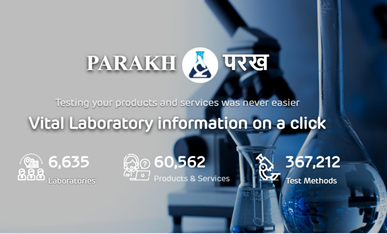
Source:
Putin is forcing a third reordering of Europe- HT
Essence: The editorial delves into the history of reordering of Europe since World War 2. The first reordering led to formation of territorial borders and of sovereign states and non-interference in internal matters of these countries. The cold war ensued and creation of West and East German was later absolved during 1989, the same era which led to disintegration of USSR. This gave way to the 2nd reordering in Europe. Subsequently, NATO which promised not to expand itself further towards the successor state Russia, defied on its promise.
Convinced that the 2nd reordering exploited the weaken Russia, Putin is all set to force a 3rd restructuring of Europe keeping Ukraine at the pivot. Crisis emerged at Crimean peninsula and Georgia, both of which were overpowered by Russia. Presently, none of the stakeholders- USA, Europe and Russia want a conflict. However, this arm-twisting could lead to the 3rd reordering of Europe.
Why you should read this article?
- To understand history of reordering of geo-politics in Europe after 2nd World War.
- To know the details of USA and Russia meetings to contain confrontation in Europe.
Source:
Why opinion polls need regulation- IE
Essence: According to the author, media is opposing a ban on the opinion polls on the grounds of freedom of speech and expression (Article 19). However, this freedom is not absolute and allows for “reasonable restrictions” and the mandate of the Election Commission (EC) to conduct free and fair elections is absolute. Moreover, various democratic countries around the world have put restrictions on opinion and exit polls ranging from 2 to 21 days prior to the elections.
As per the author, EC sees the opinion polls as interference with free and fair elections due to non-transparency related to methodology and high possibility of such opinion polls being paid. Previously two all-party meetings in 1997 and 2004 unanimously demanded for opinion poll ban. An amendment to the Representation of People Act, 1951 in 2008 banned exit polls but not opinion polls.
The author proposes setting up an independent regulator like the British Polling Council where all polling agencies disclose for scrutiny the sponsor, sample size, methodology, time frame, quality of training of research staff, etc.
Why you should read this article?
- To know about the supporting and opposing arguments for opinion and exit polls.
- To understand how opinion and exit polls may distort free and fair election.
- To know about the present legal status of exit and opinion polls and way forward.
Source:
Step up agri-spending, boost farm incomes- TH
Essence - The article highlights the fact that though the allocation for agricultural sector has increased but it is lower than the current inflation rate which 5.5-6%. The article also talks about India’s ranking on Agriculture Orientation Index which is low when compared to its Asian counterparts. Despite being agrarian economy, India’s spending is quite low in agricultural sector. This leads to lower crop yield. Not only that there has been significant reduction in the important schemes like Market Intervention Scheme and Price Support scheme. India has performed moderately as compared to other low and middle income level economies in agriculture sector.
It is the time for India to ramp up its spending in agricultural sector if it wishes to attain Sustainable Development Goal (SDG) 2. The focus should not only be on development of irrigation facilities, urban infrastructure, and development of national highways. It must be complemented with an emphasis on the development of rural infrastructure and rural transportation facilities, along with an increase in the number of markets.
Why you should read this article?
- To understand the investment level by the government in agricultural sector.
- To understand the India’s position when compared to its peers on various parameters.
- To understand what steps should be taken to elevate the situation of farmers in our country.
Source:
Young Scuba Driver creating change
Background
- Marine Plastic pollution has led to massive ecological alteration and deterioration of marine ecosystem health.
- A young scuba driver Thaaragai Arathana from Chennai, who is just 8 years of age, has taken the initiative to clean up the ocean along with her father.
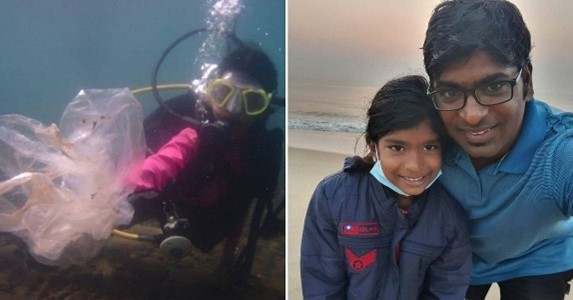
About Thaaragai Arathana’s work
- Thaaragai Arathana started scuba diving since the age of 5 and started exploring the ocean since then.
- Her father who is an expert and instructor of scuba diving for past 20 years encouraged her to explore the marine life and understand the ocean world.
- She developed great interest in the marine ecosystem and understood the grave threat to it due to the plastic pollution.
- Till date the daughter-father duo has extracted about 600kg of plastic.
- Along with plastic removal from the ocean bottom, they also create awareness drives for cleaning up beaches.
- She is also working towards spreading awareness about the conservation of Dugong.
Quote: "Many of us ask what can I, as one person, do, but history shows us that everything good and bad starts because somebody does something or does not do something."- Sylvia Earle, Oceanographer
Source:
Share the article
Get Latest Updates on Offers, Event dates, and free Mentorship sessions.

Get in touch with our Expert Academic Counsellors 👋
FAQs
UPSC Daily Current Affairs focuses on learning current events on a daily basis. An aspirant needs to study regular and updated information about current events, news, and relevant topics that are important for UPSC aspirants. It covers national and international affairs, government policies, socio-economic issues, science and technology advancements, and more.
UPSC Daily Current Affairs provides aspirants with a concise and comprehensive overview of the latest happenings and developments across various fields. It helps aspirants stay updated with current affairs and provides them with valuable insights and analysis, which are essential for answering questions in the UPSC examinations. It enhances their knowledge, analytical skills, and ability to connect current affairs with the UPSC syllabus.
UPSC Daily Current Affairs covers a wide range of topics, including politics, economics, science and technology, environment, social issues, governance, international relations, and more. It offers news summaries, in-depth analyses, editorials, opinion pieces, and relevant study materials. It also provides practice questions and quizzes to help aspirants test their understanding of current affairs.
Edukemy's UPSC Daily Current Affairs can be accessed through:
- UPSC Daily Current Affairs can be accessed through Current Affairs tab at the top of the Main Page of Edukemy.
- Edukemy Mobile app: The Daily Current Affairs can also be access through Edukemy Mobile App.
- Social media: Follow Edukemy’s official social media accounts or pages that provide UPSC Daily Current Affairs updates, including Facebook, Twitter, or Telegram channels.


